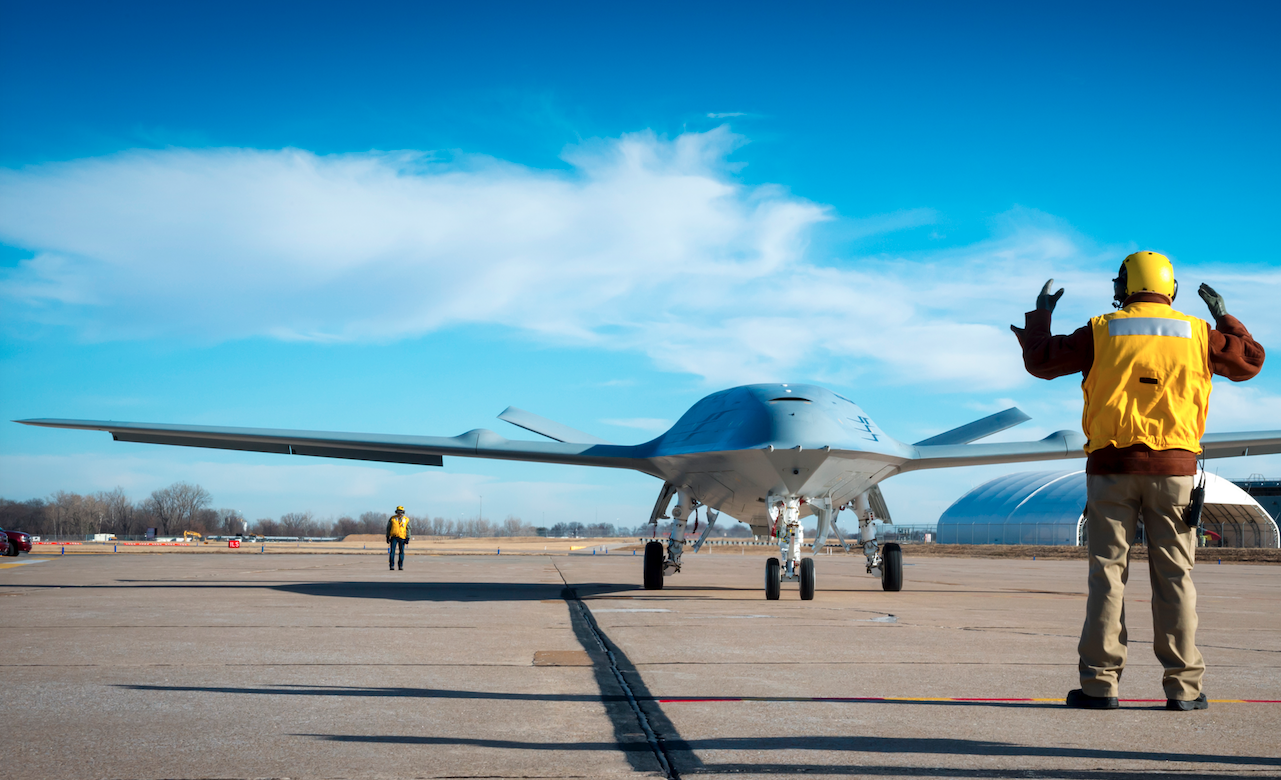
Boeing landed the contract to build the Navy’s unmanned carrier-based refueling aircraft thanks to what company executives described as an aggressive up-front research and development investment.
In August, Boeing beat out Lockheed Martin and General Atomics to win the Navy’s $805-million contract to build the first four unmanned carrier-based tankers, the MQ-25A Stingray. The program ultimately could be worth $13 billion if the Navy follows through with purchasing an additional 72 Stingrays.
The MQ-25 contract and an award to build the Air Force T-X trainer jets are considered to be the start of multi-decade programs, Dennis Muilenburg, Boeing chief executive, said Wednesday during a conference call with Wall Street analysts to discuss Boeing’s third quarter financial results.
“This is a targeted and very deliberate strategy focused on some key defense strategies that we believe have lifecycles that are measured in decades,” Muilenburg said.
Boeing did report a $691-million pre-tax charge during the third quarter, in part because of planned MQ-25 and T-X investments, Greg Smith, Boeing’s chief financial officer, said. Overall for the quarter, Boeing reported revenues of $25 billion, compared to revenues of $24 billion a year ago. Earnings for the quarter were $2.4 billion, compared to earnings of $1.9 billion a year ago.
“Our T-X and MQ-25 investments are based on deliberate and intentional decisions to create long-term valuable products and services franchises,” Smith said. “In selective key market opportunities such as these, we are taking into account the considerable market potential in our business cases, and not just the initial order quantity with the contracts.”
Analysts, though, voiced some concerns over the expense of creating the bids and fears Boeing executives did not accurately measure the risk to the company’s bottom line when developing bids lower than what competitors offered.
A day before Boeing’s call, many of the same analysts heard Marillyn Hewson, Lockheed Martin’s chief executive, describe Boeing’s winning bids for the MQ-25 and T-X contracts as unsustainable for her company.
“Had we matched the winning prices and been awarded the contracts, we estimate that we would have incurred cumulative losses across all three programs in excess of $5 billion; an outcome that we do not feel would have been in the best interest of our stockholders or customers,” Hewson said on Tuesday.
Boeing’s bids were lower than competitors, Muilenberg said, because the company spent significant time and money on developing their concepts. In the case of the MQ-25, Boeing conducted the competition’s minimum required testing, Muilenberg said, but also performed engine testing and built a prototype that will begin flight testing in 2019.
“The idea is to accelerate capability for our customers,” Muilenberg said.
The Navy has signaled for some time it wants the defense industry to pick up more of the cost to research and develop new capabilities. Secretary of the Navy Richard V. Spencer said as much when speaking in December at the Defense Forum Washington 2017, sponsored by the U.S. Naval Institute.
“The industry has handed back $20 billion over the last two or three years to their shareholders,” Spencer said in December. “I’d like a little of that to come back into R&D and CapEx (capital expenditures), but I have to have to give them a reason, I have to give them a signal.”
The signal Spencer talked of nearly a year ago is now appearing to register in defense industry boardrooms. Speaking with analysts Thursday, Thomas Kennedy, chief executive of Raytheon, explained his company enters every contract competition focused on cost. Before submitting bids, Kennedy said Raytheon studies the companies it plans to partner with, how to make factories more efficient, and what technology is needed. Raytheon makes missiles that are part of the Navy’s Naval Integrated Fire Control-Counter Air (NIFC-CA) construct, which is on about 60 surface ships, and missiles that are part of the Aegis Ashore system, among other weapons.
“Price is important to our customer, so we have to be cost-effective,” Kennedy said. “One of the things we have been doing is using our technology: technology we’ve been developing and bringing to these competitions, not just to enhance the performance of our solution, but to take out the cost significantly.”
With $8 billion in cash on hand as of September 30, Boeing has the capital to cushion research and development expenses. This money can be used for such business functions as reinvesting in the company, paying dividends, buying back stock. Boeing finished 2017 with $8.8 billion in cash and reported having roughly the same amount at the end of 2016, according to the company’s financial reports.
In comparison, Lockheed Martin reported having $897 million in cash on hand as of September 30. The company finished 2017 with $2.9 billion in cash and finished 2016 with $1.8 billion in cash, according to the company’s financial reports. However, Lockheed Martin is currently ramping up production on its lucrative and likely multi-decade F-35 Lightning II Joint Strike Fighter program.
“With the strong cash performance of our company, our strong financial performance overall, we have the fuel to do this,” Muilenberg said. “This is an excellent use of cash.”





